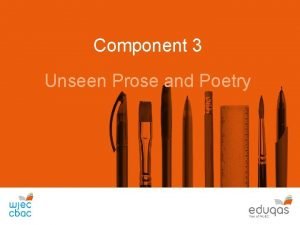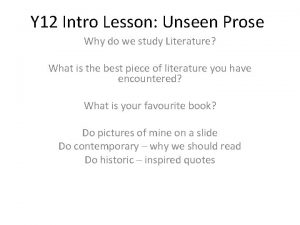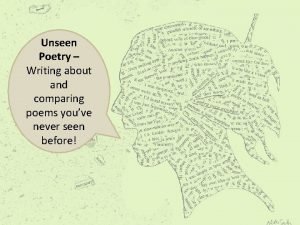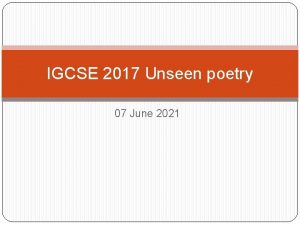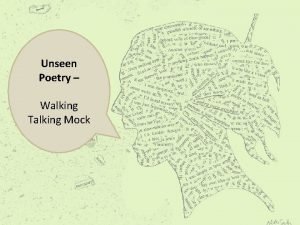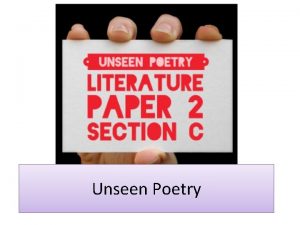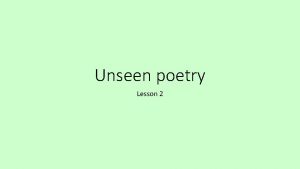Unseen Poetry Define and give an example of






- Slides: 6

Unseen Poetry

Define and give an example of each: • Narrative poetry • Lyric poetry • Epic poetry • Satirical poetry • Elegy • Verse fable • Dramatic poetry • Prose poetry • Light poetry

10 Tips for analysing unseen poetry • Form – sonnet, etc. • Genre/ type (very likely to be love) • Poet – gender, year published • Typical, atypical • Connotations of dominant Imagery • Semantic fields ? • Metaphor, simile (symbol), personification • Alliteration, assonance, consonance etc (Phonology) • Caesurae, volta, anaphora, etc. – link to Q • Meter and rhyme

Exam Questions • The question wording (Compare and contrast…this comment) can will remain unchanged. • Poems will explore a key aspect of Love (through the ages). • You could use poems from the Love through the Ages anthology not studied for examination (post-1900) for revision. • Poems set for examination can be taken from any time period; both poems set may come from the same period or they may come from different periods.

Writing the response/essay Start with your BIG IDEA about the 2 poems – this may be similar to the statement on the sheet about the 2 poems (different attitudes to religion ? ). Then plan out comparisons: Semantic fields Meter and rhyme Imagery Other linguistic techniques used BUT DON’T JUST LIST THE FEATURES – ALWAYS TIE INTO YOUR BIG IDEA

Now write the essay • You don’t need to start with an introduction (as it might be quite similar ti the question) but it can help indicate to the examiner what you will write about. • Try and avoid writing 3 paragraphs about 1 poem and then 3 paragraphs about the second – it is meant to be a comparison. • But work out whether you want the essay organised by poetic features – imagery in both poems say OR write 1 paragraph on the imagery in 1 poem and then a paragraph on the imagery in the 2 nd poem • If the former way works it is most impressive (although not so good if it doesn’t) but the second method is fine and can still get you a good grade A.

